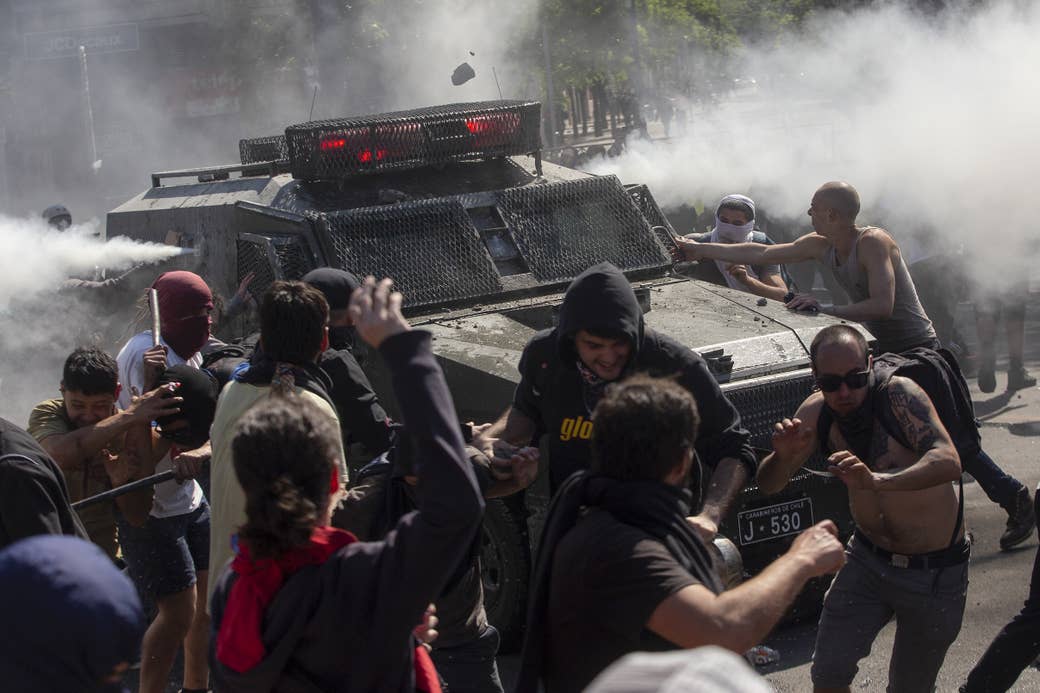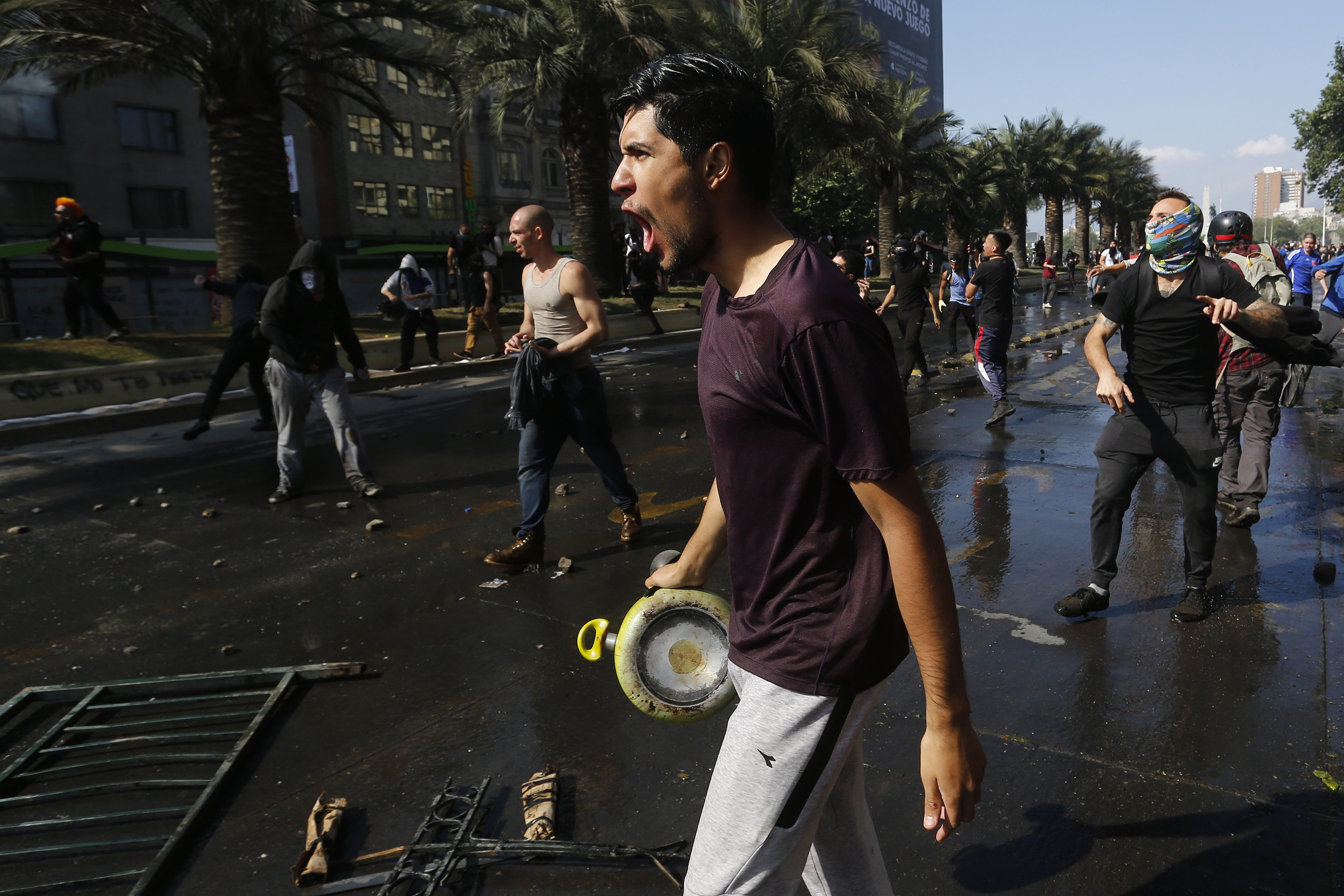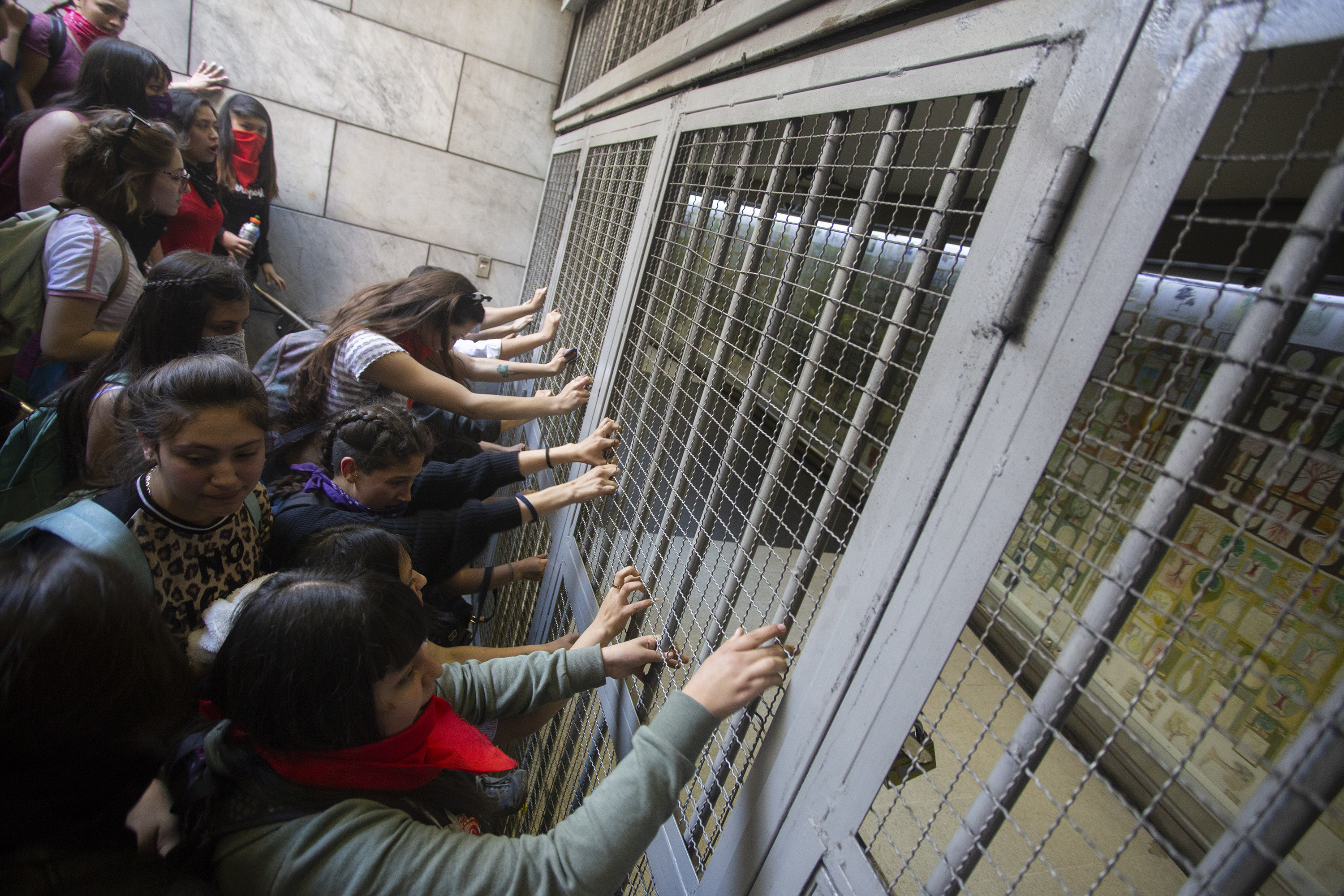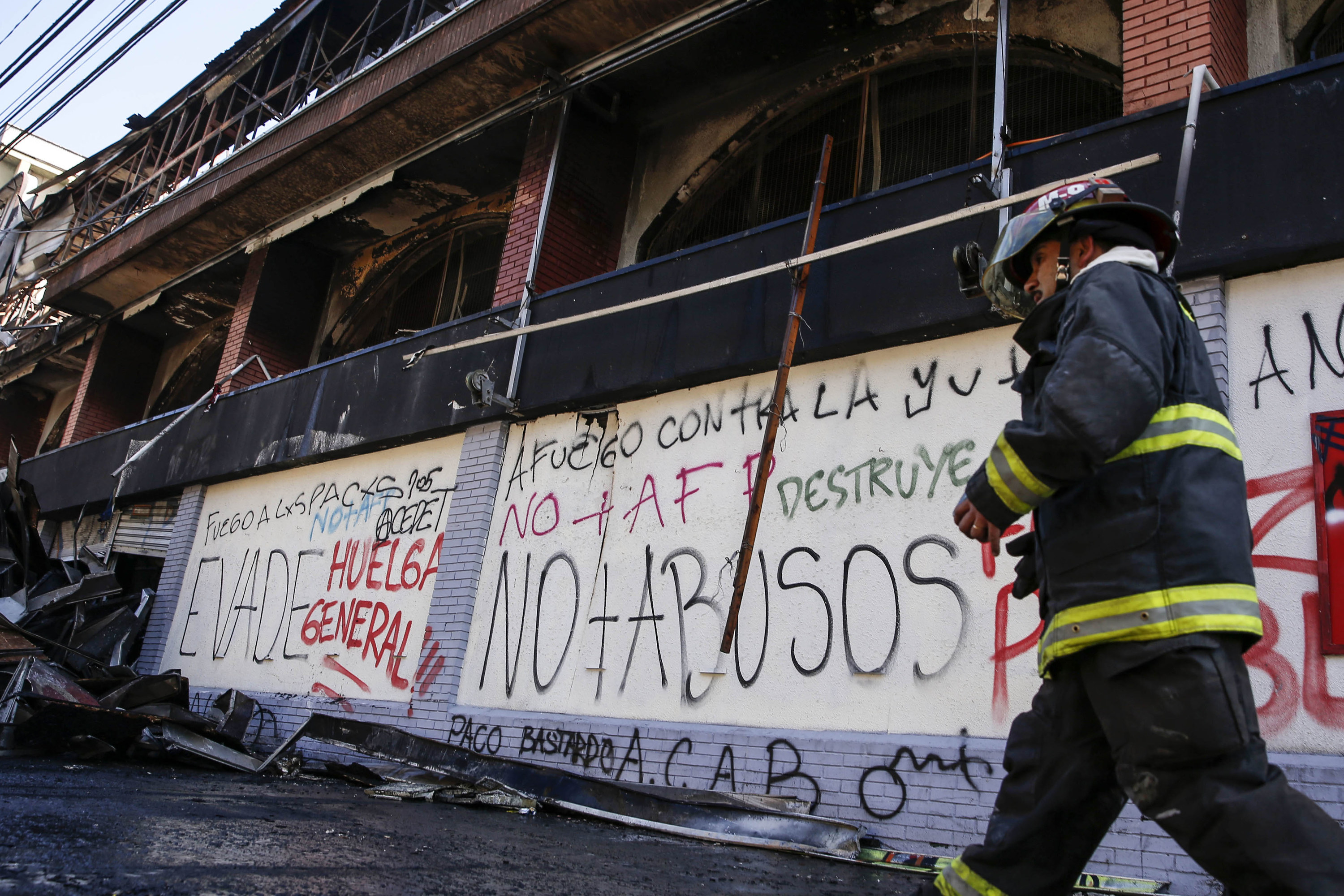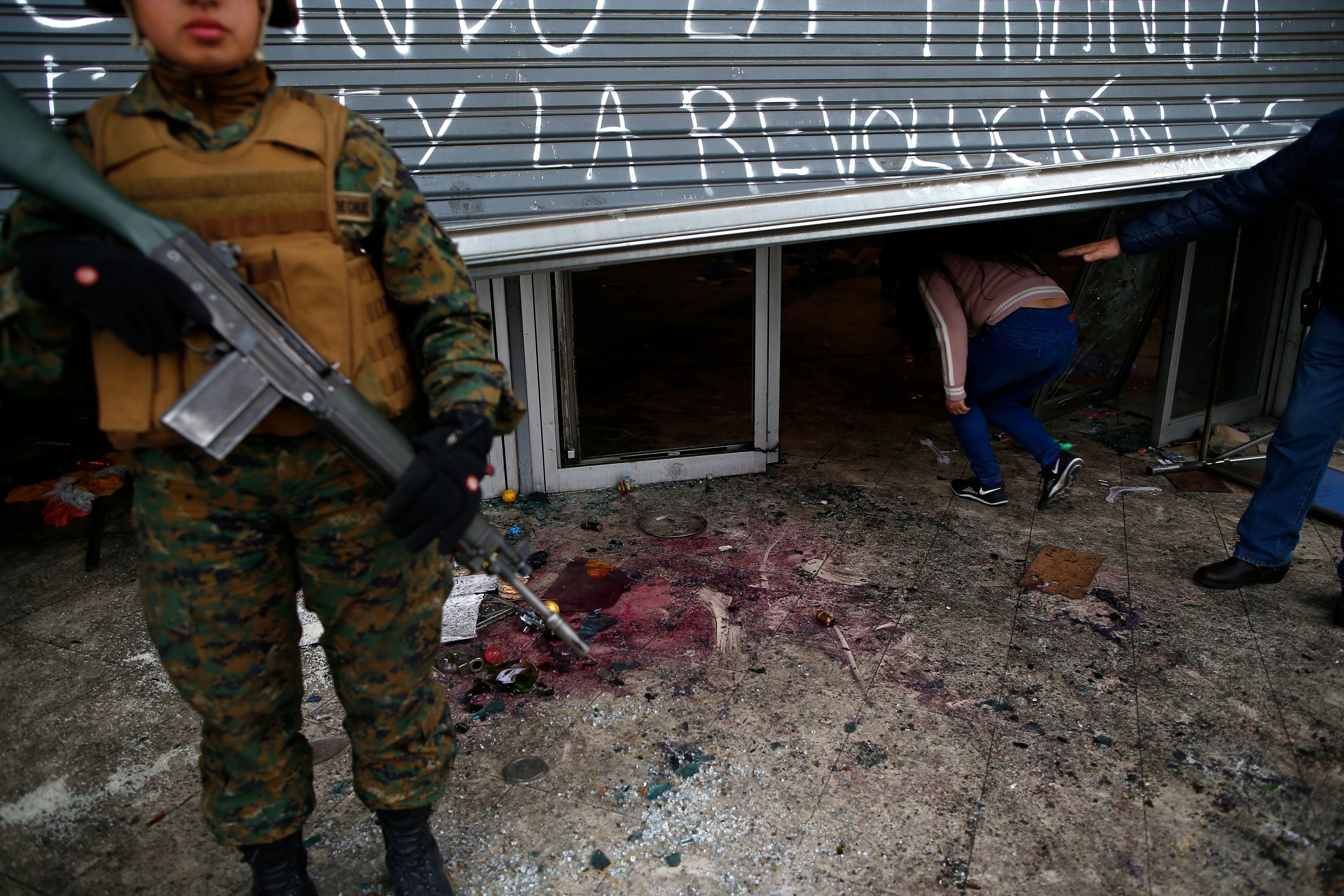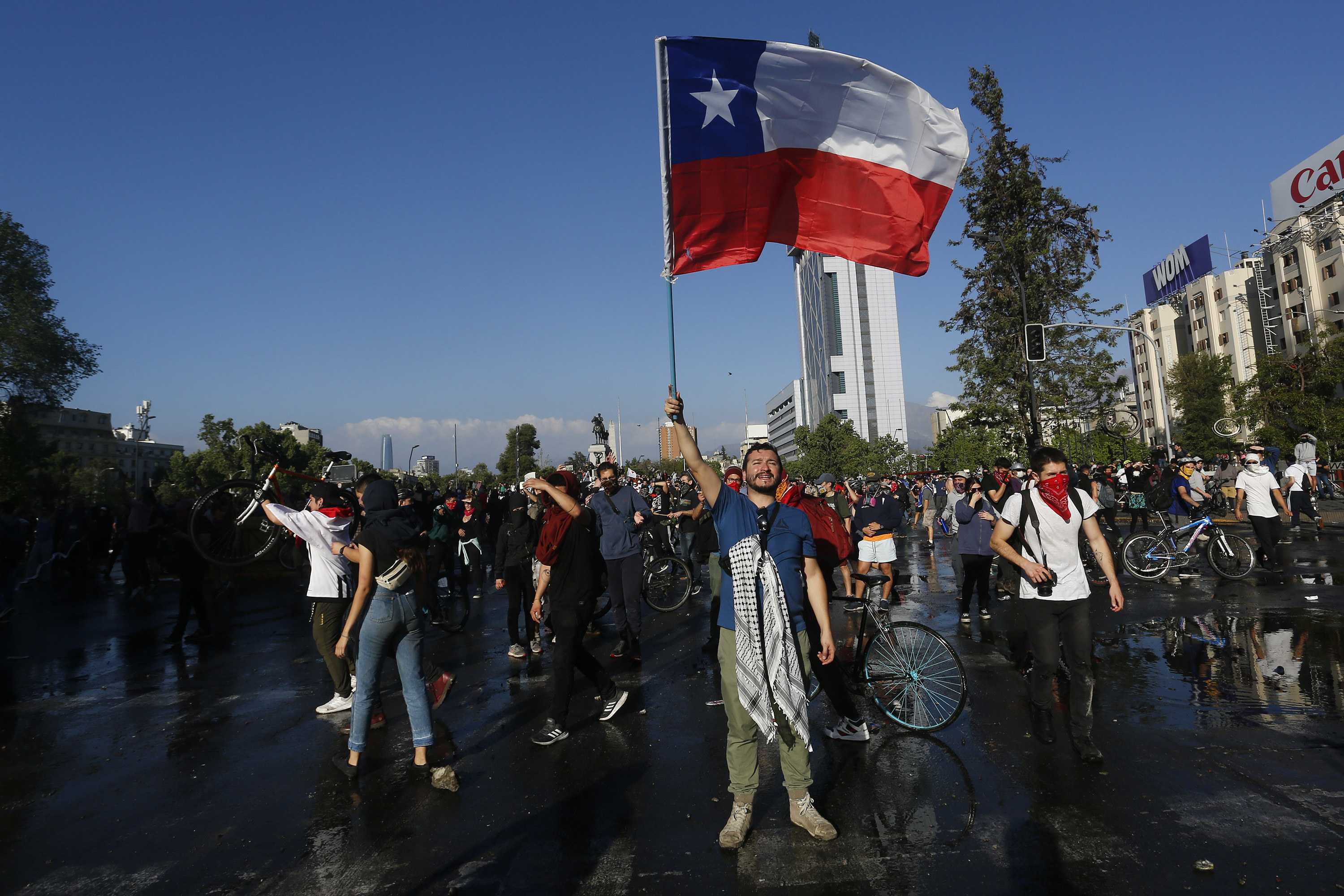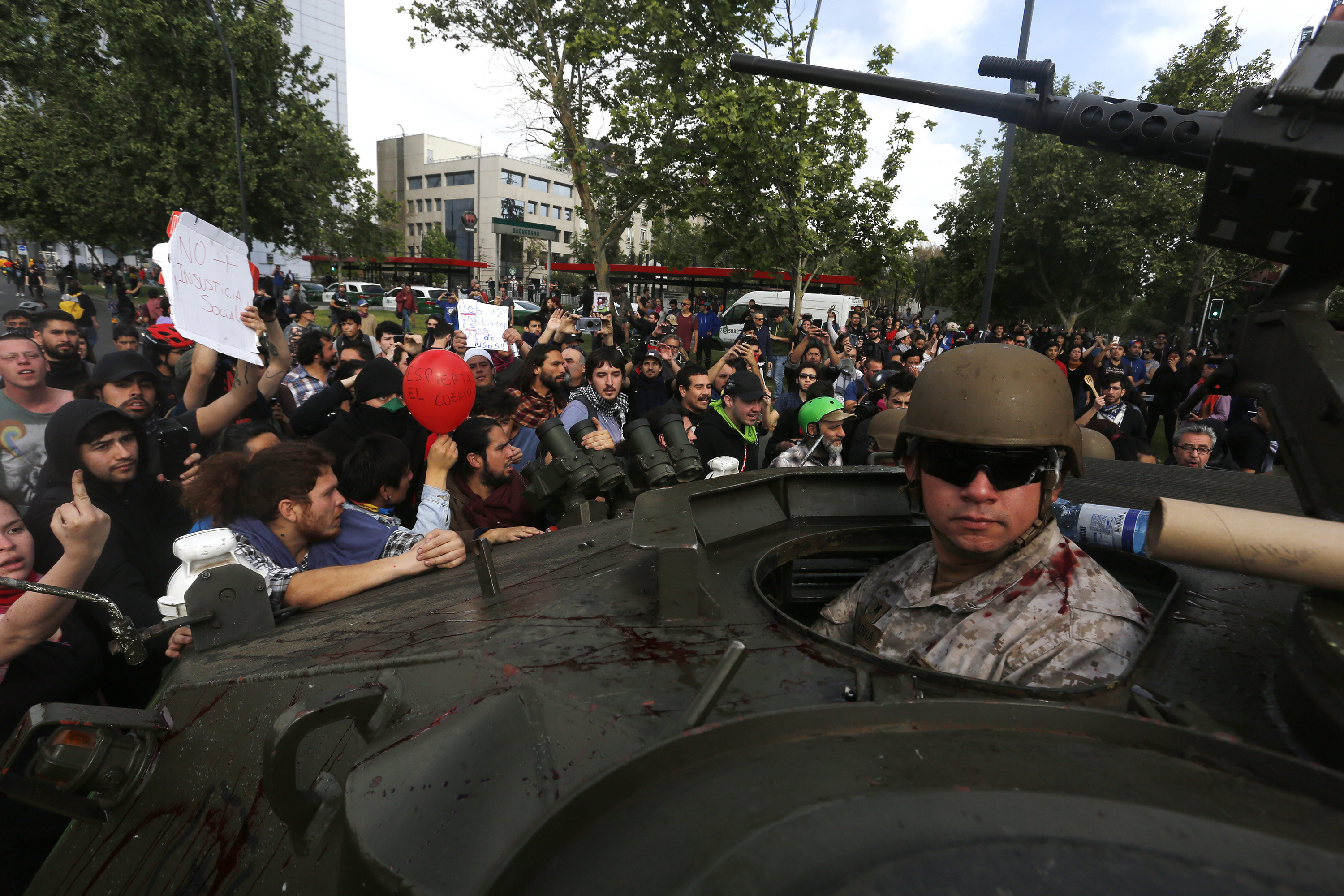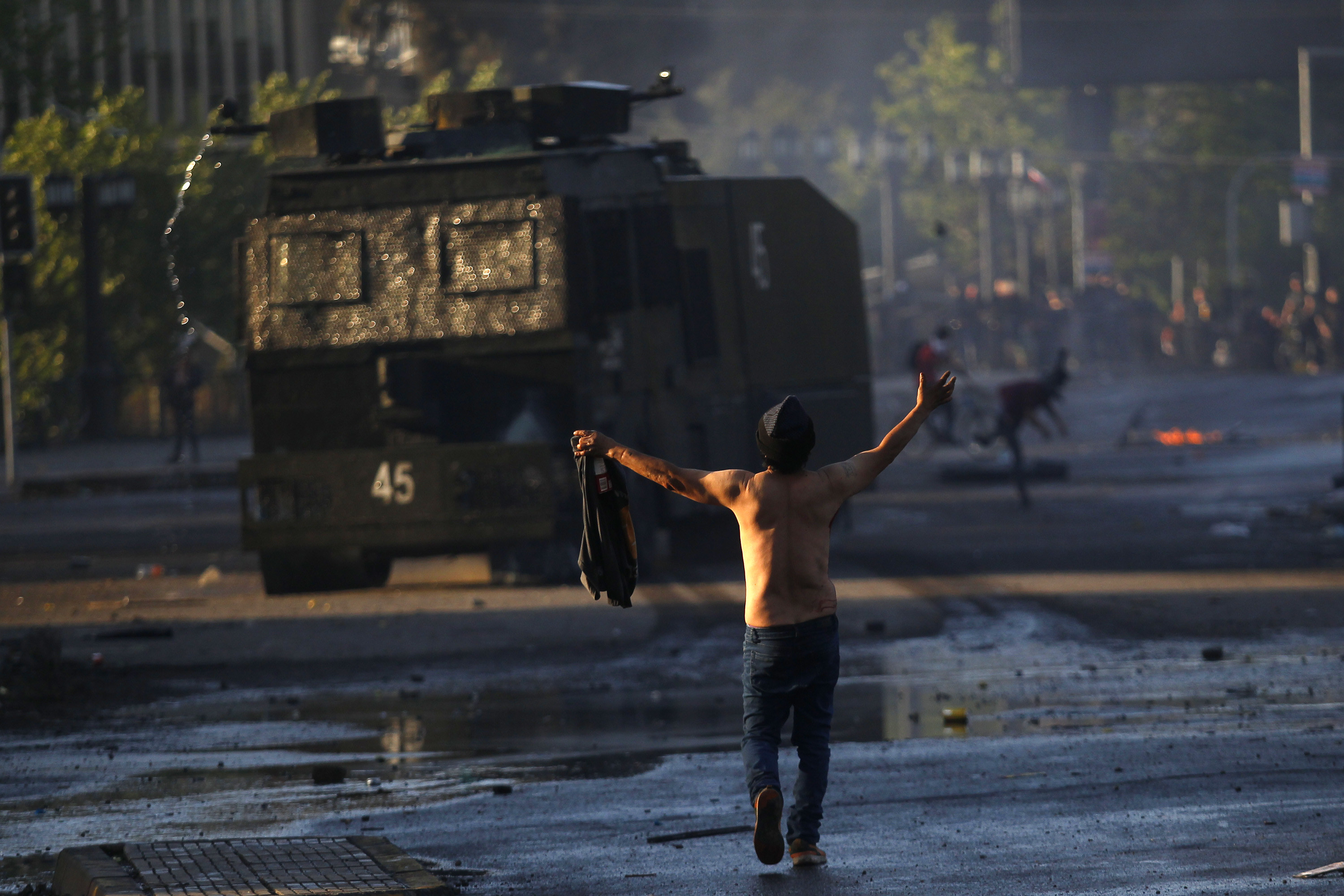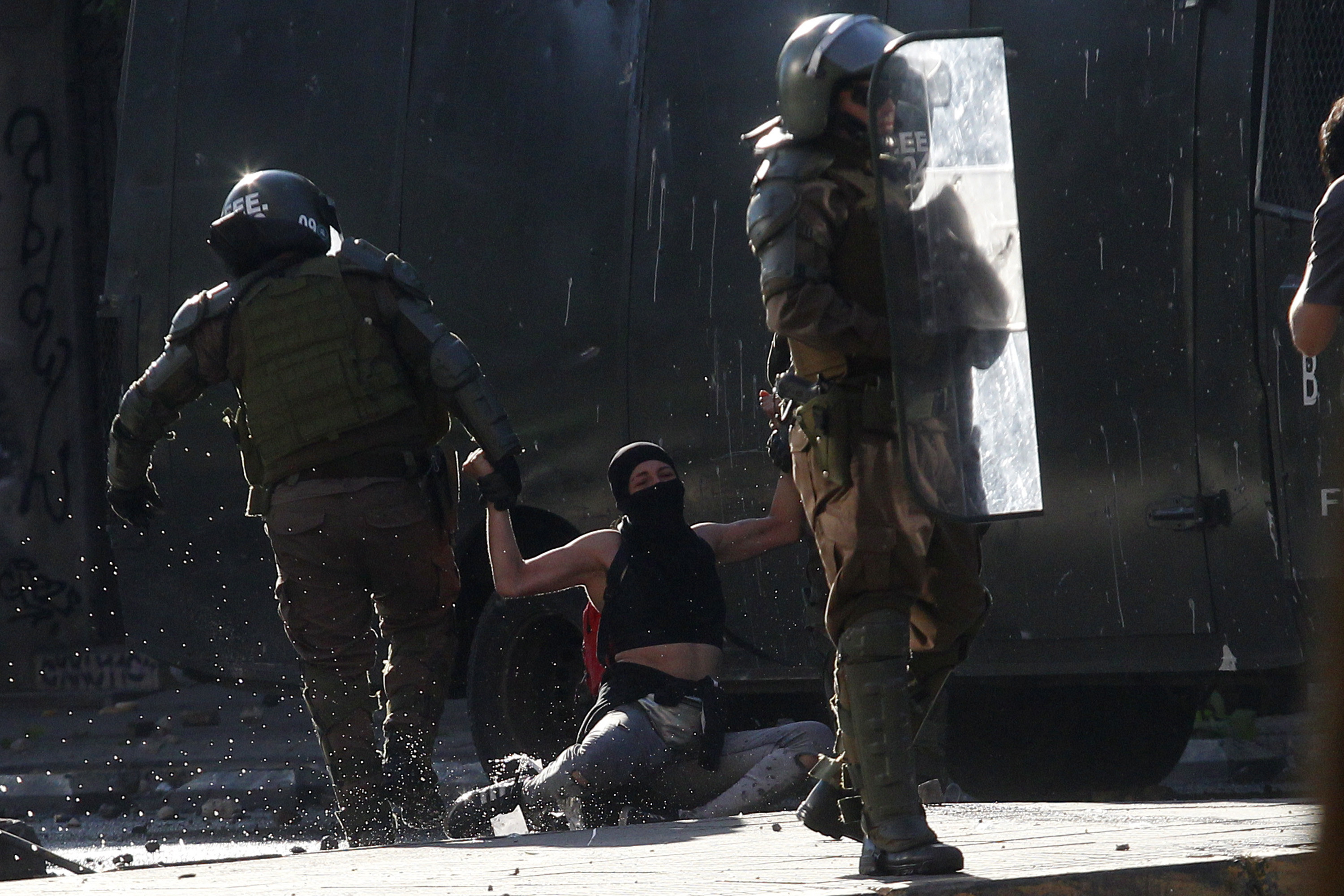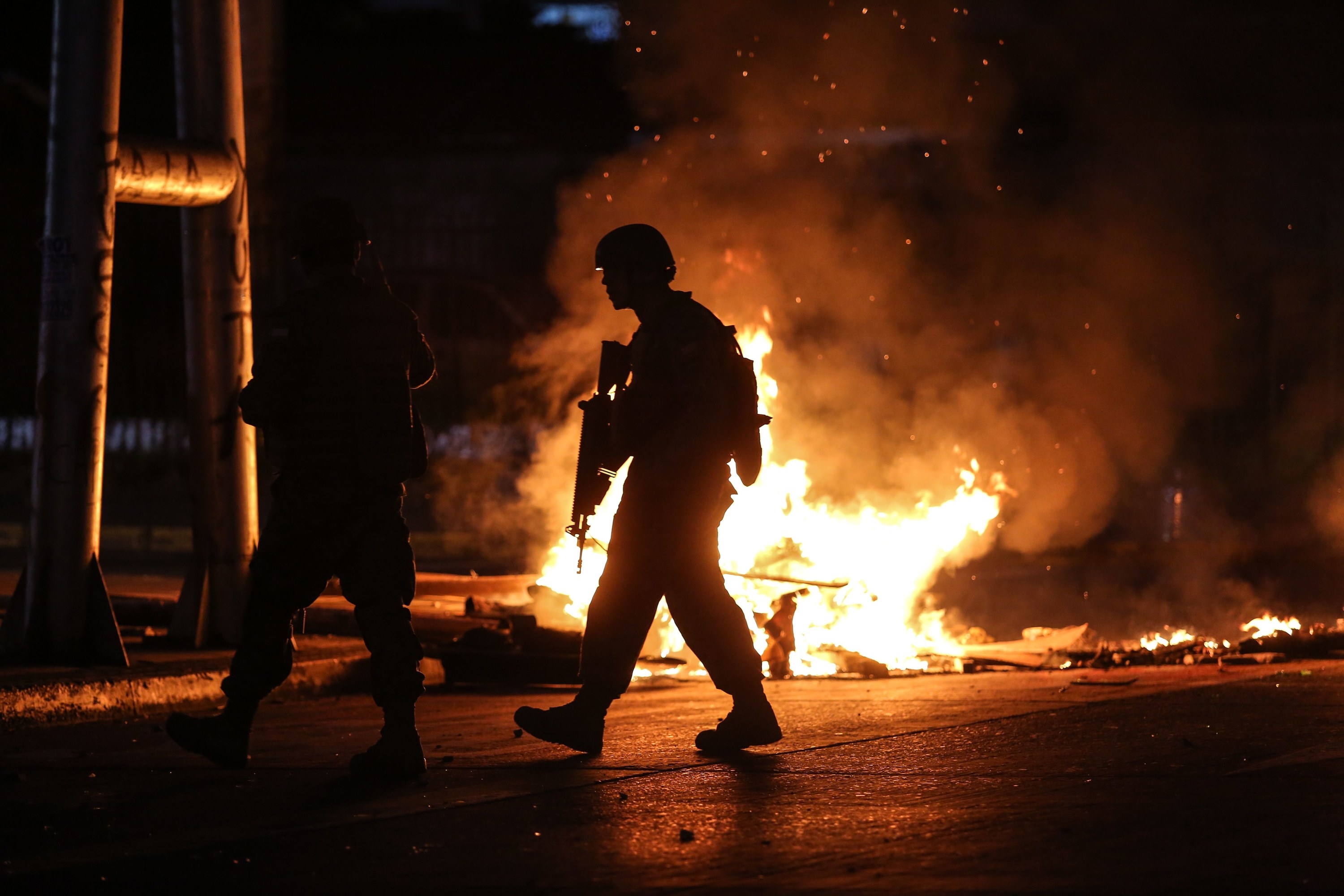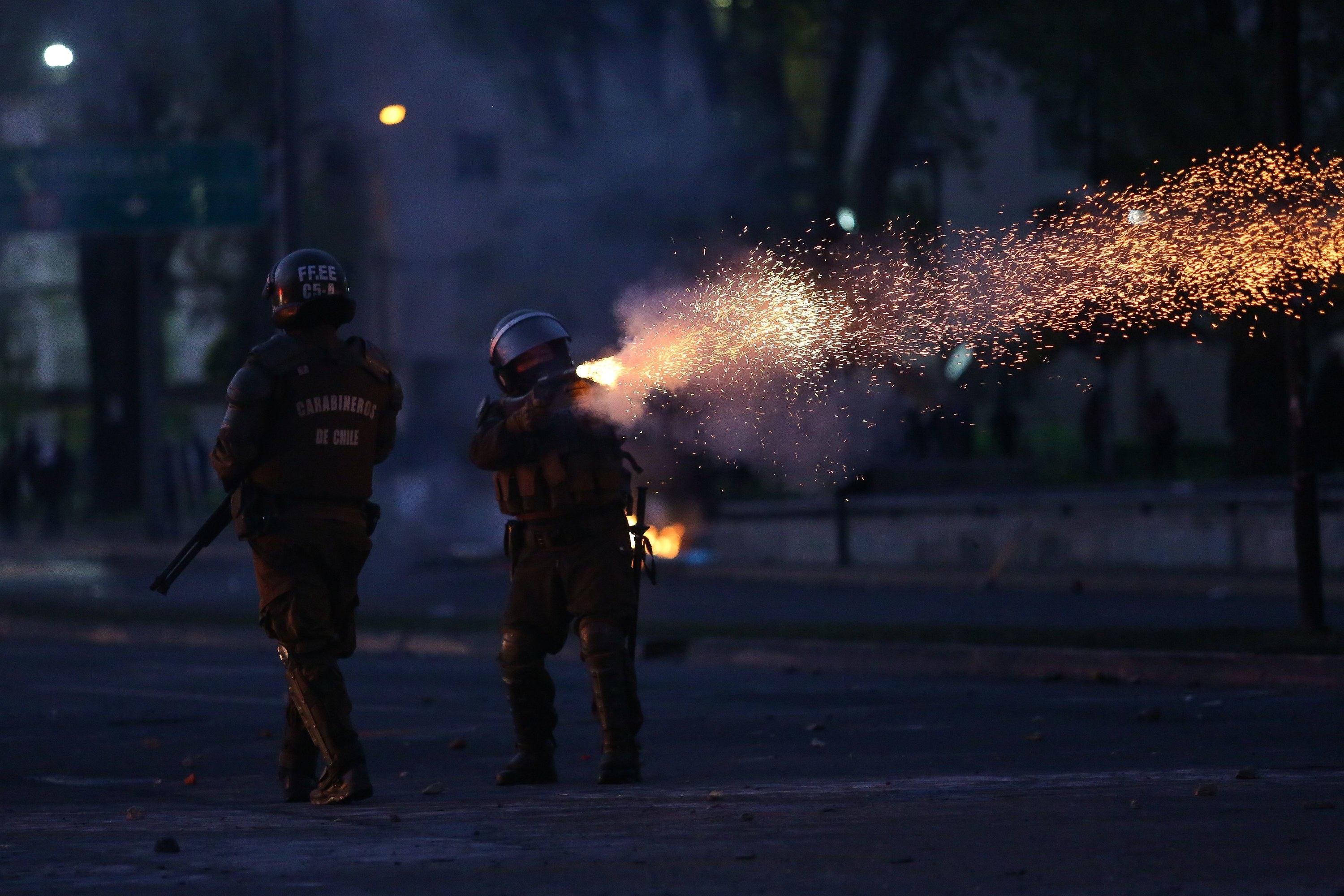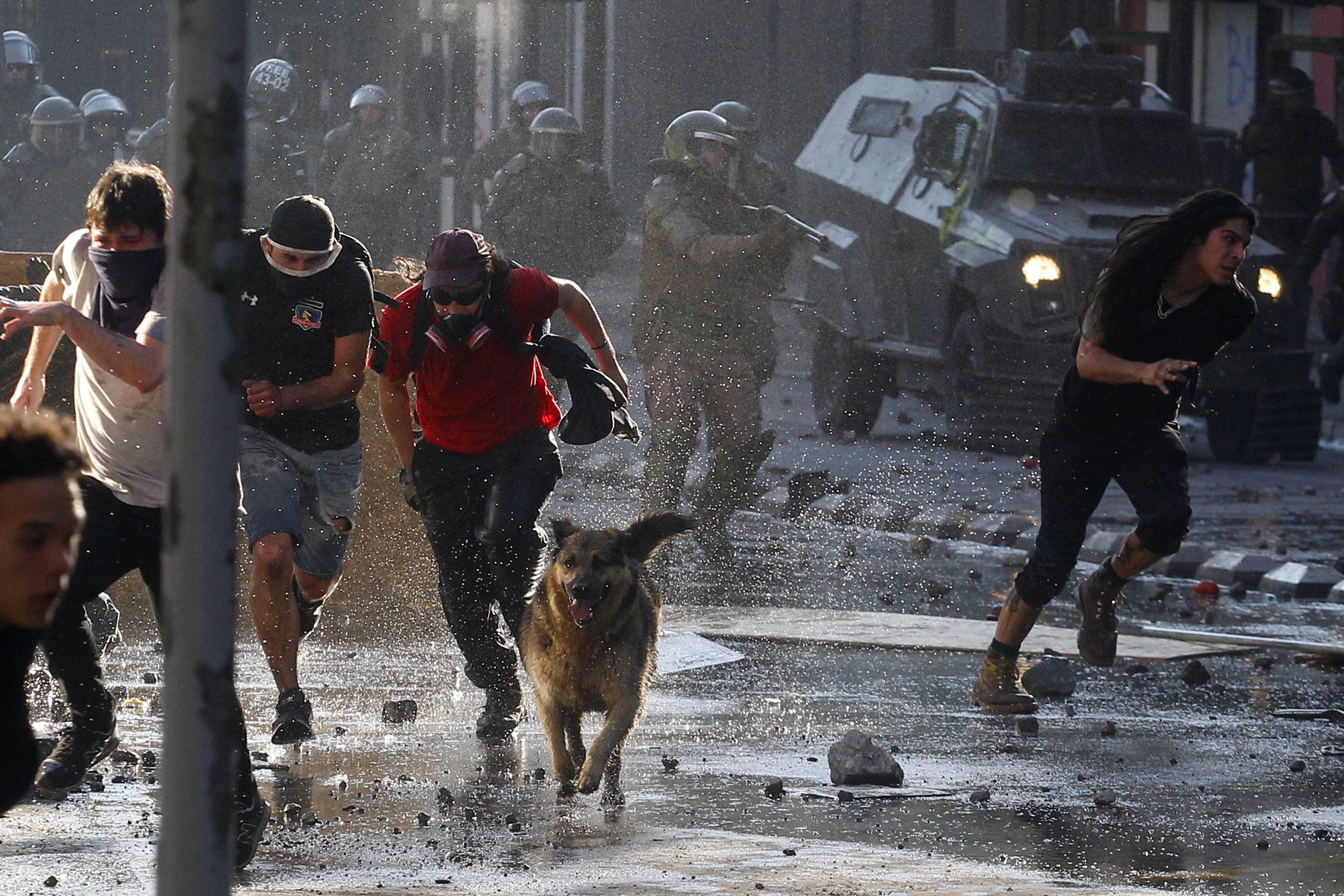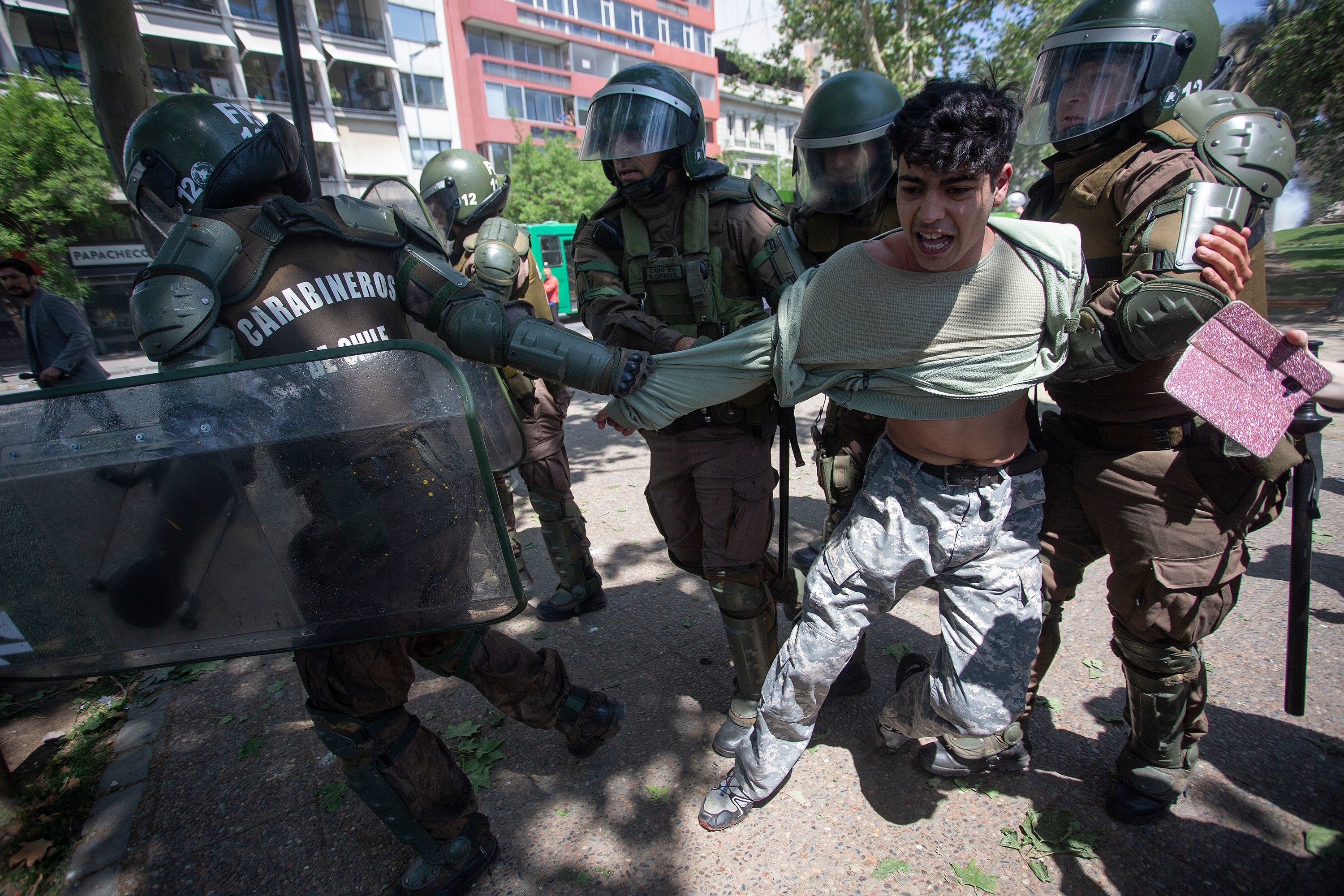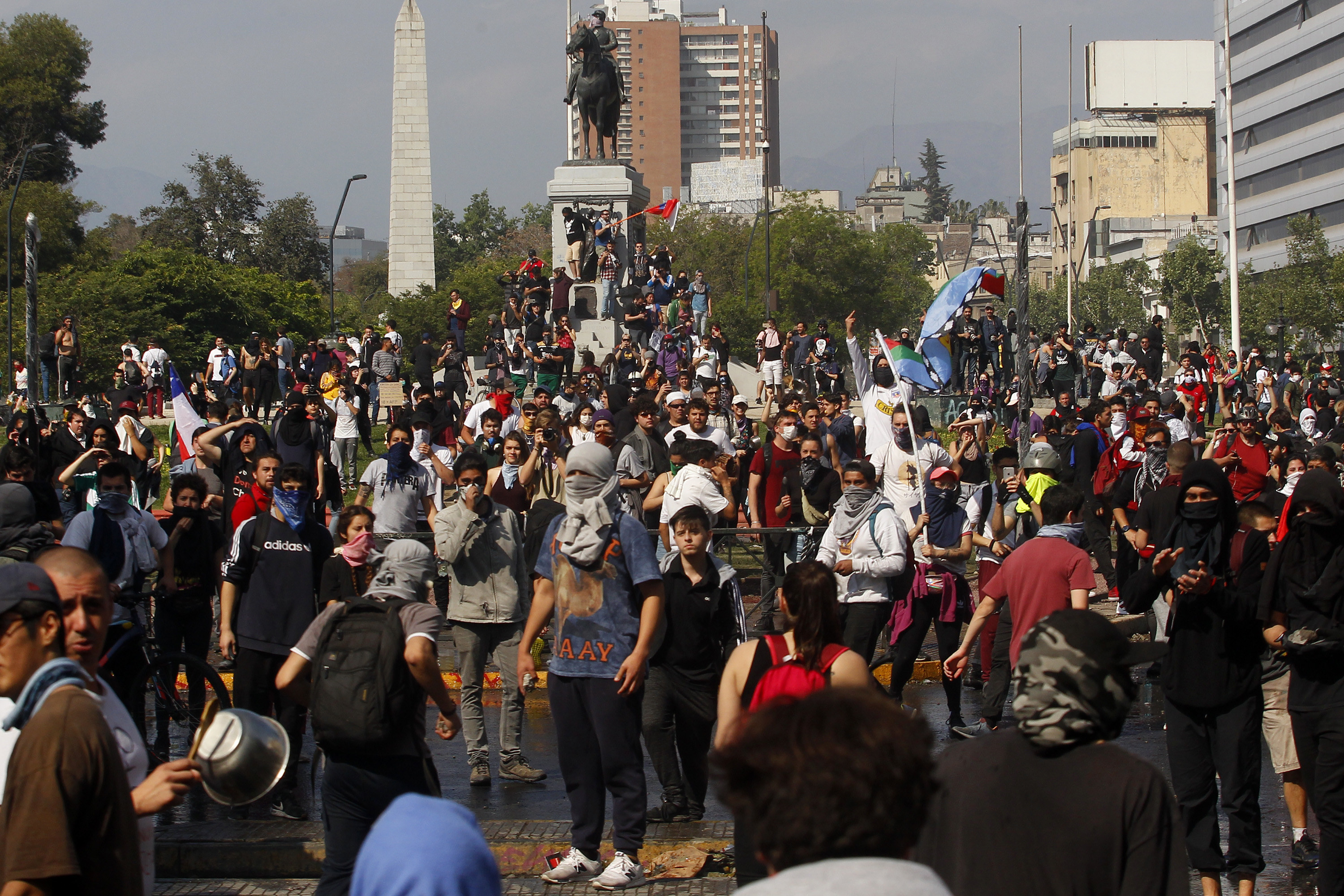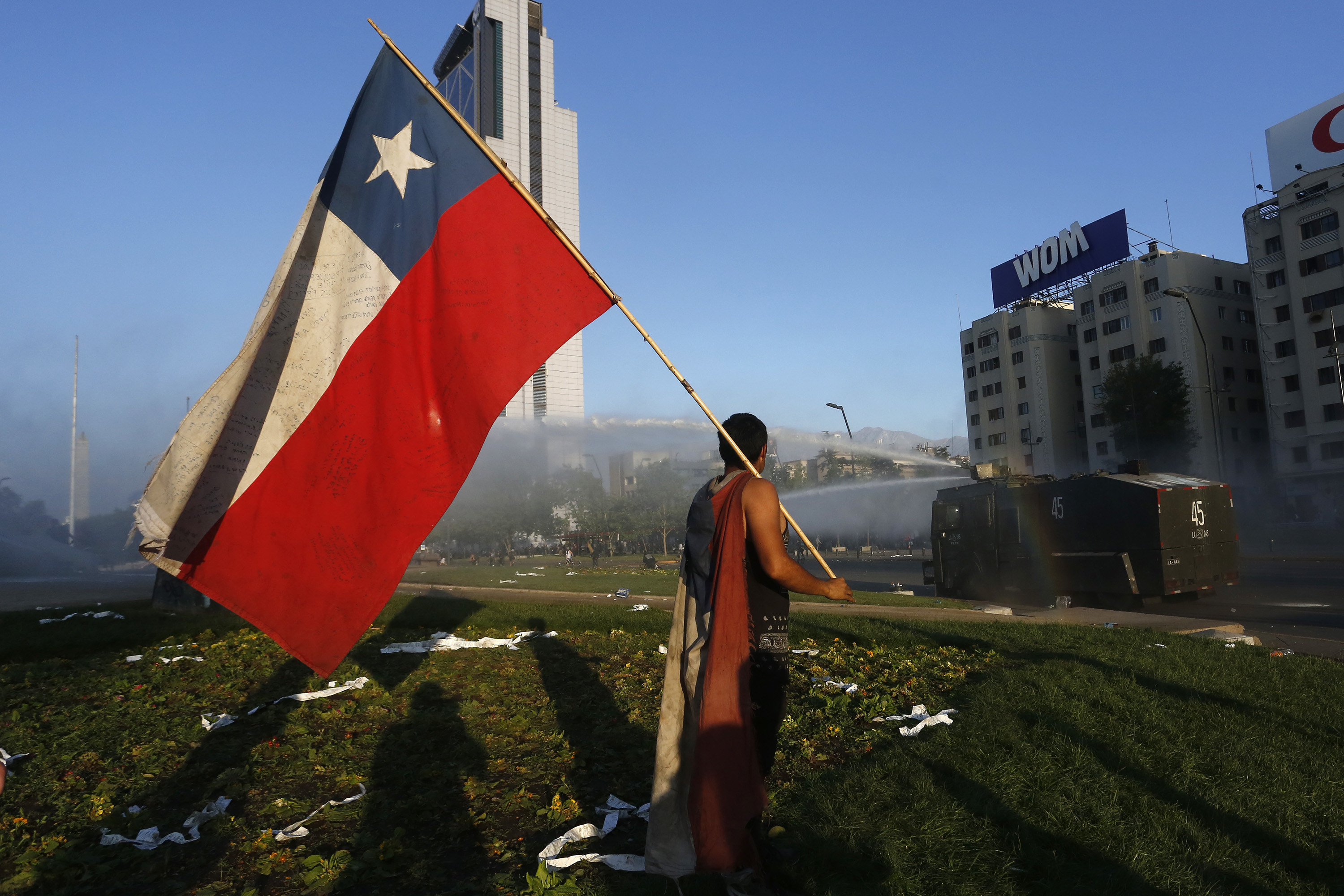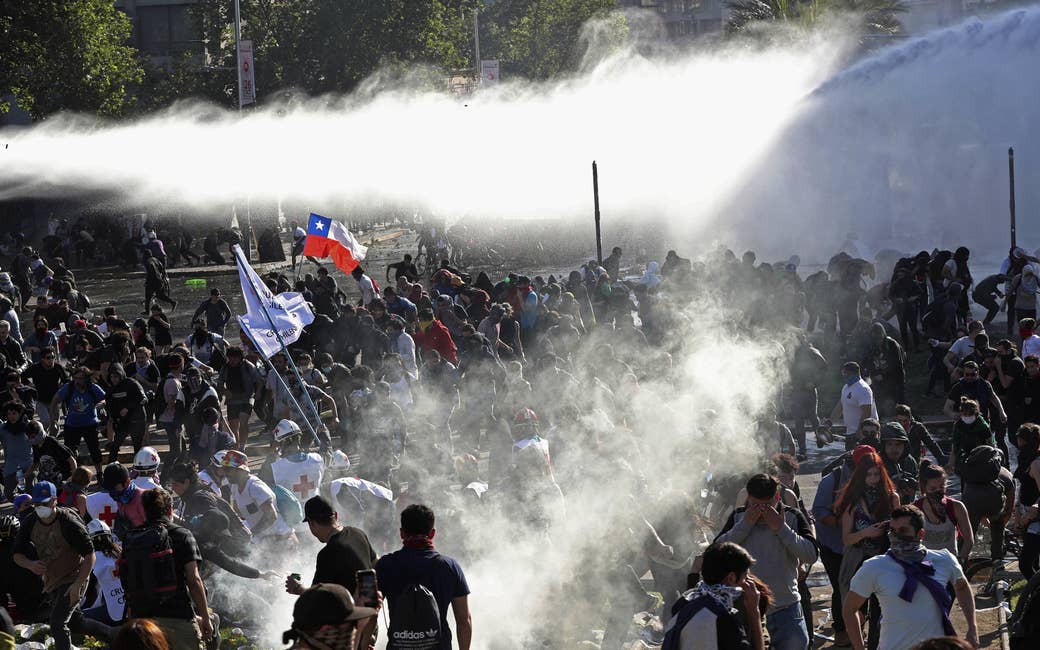
A state of emergency has been declared across parts of Chile in response to huge anti-government protests that initially began in opposition to a 4% rise in subway fares.
Santiago Gov. Karla Rubilar said Monday that 11 people had died as a result of protest-linked violence over the weekend.
Student-led protests began at the start of last week when people jumped over subway ticket barriers in opposition to the increased prices. But by Friday, the unrest had morphed into a larger protest movement against inequality and the rising cost of living in Chile. “It’s not about 30 pesos, it’s about 30 years,” was a common chant from protesters, referencing the increase in subway fares and rising inequality over the last three decades.
Three days of violent demonstrations followed in Santiago and in other cities, with rioters setting subway stations, banks, supermarkets, and other buildings alight. Many of the deaths have been as a result of fires started by rioters.
This weekend, police were joined by more than 10,000 troops in Santiago — the first time troops have been deployed in the capital since the military dictatorship of Gen. Augusto Pinochet ended in 1990. More than 1,400 people have been arrested.
Chile’s President Sebastián Piñera, a billionaire conservative, canceled the subway ticket increase on Saturday, saying he had “heard with humility the voice of my compatriots.” But on Sunday he gave a televised address from the country’s military headquarters where he expanded a state of emergency to other parts of the country outside Santiago, saying, “We are at war against a powerful enemy, who is willing to use violence without any limits.”
